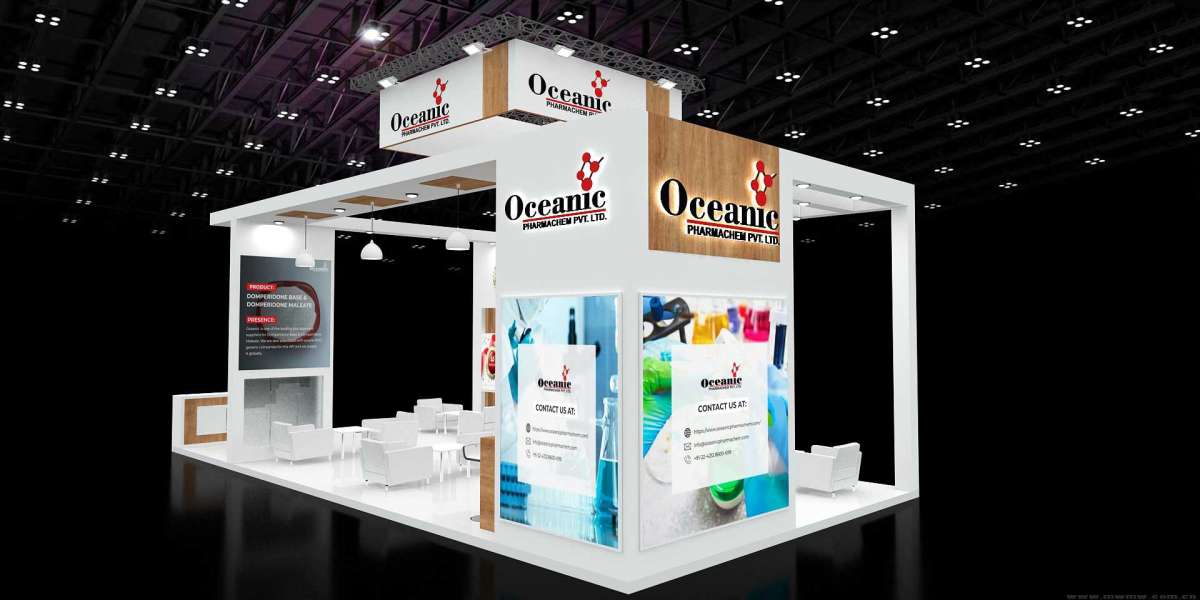Trade shows present a valuable opportunity for businesses to engage with potential clients, partners, and industry leaders. However, the effectiveness of your participation largely depends on the booth’s design and construction. A thoughtfully crafted booth can attract attention, foster interactions, and convey your brand’s message clearly. In this blog post, we’ll walk you through the key steps of constructing a trade show booth, from conceptualization to final touches, ensuring your booth stands out and fulfills its purpose. Whether you're working with an exhibition stand builder in Germany or another location, these insights will help you create an impactful and memorable presence.
Step 1: Clarify Your Goals and Objectives
Before you dive into design or construction, it's crucial to define what you aim to achieve with your booth. Are you focusing on generating leads, increasing brand visibility, launching a new product, or creating networking opportunities? Clear objectives will guide your decisions on booth layout, design, and functionality.
- Lead Generation: If lead capture is your priority, create spaces that encourage conversation and engagement, such as interactive displays and demos.
- Brand Visibility: For brand awareness, focus on eye-catching designs and prominent placement of your branding elements.
- Product Launch: For showcasing a new product, ensure the booth has designated areas for live demos and product displays.
- Networking: For networking, design areas with comfortable seating and informal spaces where people can gather and interact.
Step 2: Select the Right Layout and Design
The layout of your booth is one of the most critical factors in booth construction. It should be designed to facilitate smooth traffic flow while highlighting the focal points of your booth. A well-planned layout will guide visitors’ movements and ensure a memorable experience.
- Open vs. Closed Booths: Open booths invite visitors to wander in freely, while closed booths provide a more controlled setting for private meetings or exclusive presentations.
- Maximizing Space: Utilize every inch of your booth effectively. Create distinct zones for different activities, such as product displays, meetings, and demonstrations.
- Branding and Visual Design: Your booth should reflect your brand’s identity through colors, logos, and overall aesthetic. Modular booths offer flexibility and can be adapted for various events, ensuring consistency in your branding.
- Incorporating Technology: Integrating digital displays, touchscreens, or interactive kiosks can enhance engagement. High-tech options like VR or AR can leave a lasting impact on visitors.
Step 3: Choose the Right Materials
The materials you select for your booth will influence both its visual appeal and practicality. Opt for materials that are durable, on-brand, and easy to work with during setup and teardown.
- Framing and Structure: Lightweight metal or aluminum frames are popular for their strength and easy assembly. For larger booths, steel may be necessary for added stability.
- Wall Panels and Displays: Materials like plywood, acrylic, fabric, or MDF are commonly used. Consider fabric for custom graphics as it’s flexible and easy to print on.
- Flooring: Flooring choices like carpet tiles, vinyl, or interlocking tiles contribute to comfort and style. Make sure the flooring matches your booth’s aesthetic while providing comfort for standing or walking.
Step 4: Focus on Functionality
While a visually appealing booth is important, functionality should never be overlooked. A booth that works smoothly enhances both the visitor experience and your efficiency.
- Storage Solutions: Include hidden storage for promotional materials, personal items, and extra supplies to keep the booth neat and organized.
- Lighting: Effective lighting is essential for setting the right mood and drawing attention to key areas, such as your product displays or interactive elements. LED lights are energy-efficient and versatile.
- Furniture: Use practical, comfortable furniture that complements your design. Avoid overcrowding the space with too much seating, and focus on pieces that support the activities in your booth.
- Power and Wiring: Ensure you have sufficient power outlets for all devices, such as computers, screens, and lighting, while keeping wires hidden and organized.
Step 5: Refine the Details and Add the Finishing Touches
With the main structure in place, it’s time to add the final touches that will elevate your booth’s overall impact.
- Branding and Signage: Use banners, posters, and digital displays to reinforce your branding. Make sure all signage is legible and positioned so it’s visible from all angles.
- Interactive Elements: Introduce interactive experiences like touchscreen kiosks, games, or product demonstrations. These elements can captivate visitors and encourage them to stay longer.
- Giveaways and Promotional Materials: Have branded giveaways like pens, bags, or brochures available for visitors. These items can serve as reminders of your booth after the event.
- Maintenance and Cleanliness: Ensure your booth remains tidy throughout the event. Assign someone to keep things organized and make sure everything is in place.
Step 6: Plan Logistics and Project Management
Efficient logistics and project management are key to a smooth booth construction process. Begin planning well in advance to account for any potential setbacks, and always be prepared for deadlines and shipping requirements.
- Budgeting: Booth construction can be costly, especially for custom designs. Set a realistic budget that accounts for materials, labor, shipping, and other expenses, and consider the long-term value of your booth as an investment.
- Hiring Professionals: If your team lacks the necessary expertise, consider hiring professionals who specialize in booth construction. Their experience will ensure high-quality results and streamline the process.
- Assembly and Dismantling: Ensure your booth is easy to assemble and disassemble. This will save you time and labor on the day of the event, allowing for a stress-free setup.
Conclusion
Constructing a successful trade show booth is a blend of creativity, strategy, and practicality. The process requires careful planning, from setting clear objectives to choosing materials and ensuring functionality. By focusing on engaging design, effective branding, and seamless operations, you’ll create a booth that attracts visitors, fosters connections, and leaves a lasting impression. Whether you're handling booth construction in Bielefeld or elsewhere, the right approach ensures your booth stands out in the crowded exhibition hall and contributes to your event success.








